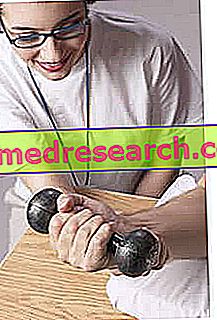Definition
Chronic lichen simplex (neurodermatitis) is an eczema that occurs as a result of rubbing, scratching and repeated mechanical trauma; through numerous mechanisms, the itchy sensation that induces scratching causes further itching, thus causing a vicious circle.
Chronic lichen simplex does not represent a primary pathological process: the itching perceived in a certain area of the skin (with or without underlying pathology) causes a thickening of the skin of variable degree (secondary lichenification).
The exact causes that determine the onset of the disorder are still unclear, but chronic lichen simplex can lead to alterations in the way the nervous system perceives and processes itchy sensations.
The skin that tends towards eczematous conditions (eg atopic dermatitis) is more prone to lichenification. Often, chronic lichen simplex occurs in subjects with anxiety disorders and non-specific emotional stress.
Most common symptoms and signs *
- Skin discoloration
- Erythema
- papules
- Dry skin
- plaques
- itch
- Scales on the skin
Further indications
Chronic lichen simplex is characterized by lichenified, hyperpigmented, scaly, dry and itchy plaques; the shape of these lesions is round or irregular. In many cases, skin symptoms affect areas of the skin that are easily accessible, such as legs, arms, neck and upper part of the trunk.

Chronic lichen simplex. Image taken from Wikipedia.org
The diagnosis of chronic lichen simplex is based on physical examination: a completely formed plaque consists of an outer zone of bounded papules, brownish in color and a central area of confluent scales-covered lesions. Other conditions with a similar appearance include tinea corporis, lichen planus and psoriasis; chronic lichen simplex can be distinguished from these pathological conditions by fresh preparation with potassium hydroxide and biopsy.
The treatment involves, first of all, informing the patient about the effects of scratching and rubbing, and about behavioral techniques to resist the pruritic stimulus. During acute phases, on the other hand, therapeutic intervention may consist of the administration of topical corticosteroids. In some cases, antihistamines and emollients may be useful.



